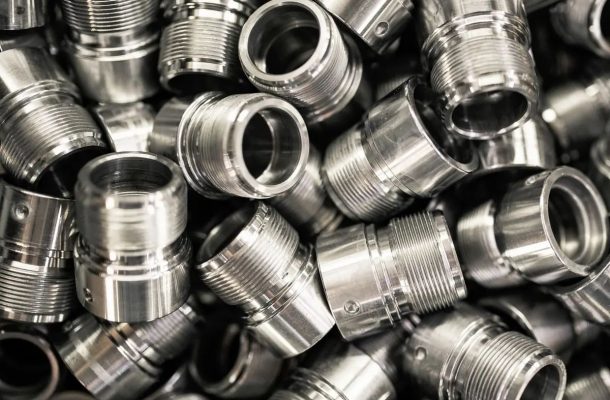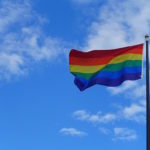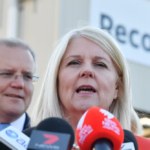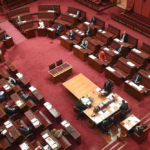Manufacturing an opportunity from COVID-19

The economy, or your life? Faced with COVID-19, Australians chose life – sacrificing thousands of jobs, particularly in the retail and service sectors.
The shutdown is easing, but travel and immigration restrictions remain, and are expected to have a long-term impact on the real estate and job markets.
Urban planner and designer Carl Grodach’s particular interest is how cities support employment. With every challenge comes an opportunity. The post-COVID world “is a golden moment to revive manufacturing”, he says.
Before COVID-19, Professor Grodach was an advocate for small-scale urban manufacturing, which he said was an unrecognised contributor to the local economy. He argued that zoning laws ought to be more flexible so these manufacturers were not forced to relocate to urban fringes; he believed historic inner-city industrial sites that provided workspaces for local makers were being too readily replaced with apartments.
A boost for local employment
An expanded manufacturing sector could boost local employment and provide benefits across the economy. Asked what industries he has in mind, Professor Grodach suggests that an audit be done of what’s being imported, of what we have the capacity to manufacture here, to decide what products are most needed.
“That’s the first step – understanding where we can target, where we can intervene,” he says.
“Another step is thinking through educational programs and making sure that you have the pipeline set up to provide skills where you need them most – whether it’s manufacturing pharmaceuticals, or more tech-based manufacturing [he nominates biotech as a contender, given the biotech research already taking place in Melbourne], or the smaller-scale cultural product manufacturing that I was studying.”
Thirdly, he says we need to ensure that our zoning regulations can accommodate an expanded manufacturing sector. The rules now in place treat “manufacturing as something that’s dirty and separate. When you’re looking at some pharmaceutical products, some food manufacturing industries, they aren’t necessarily going to be noisy and polluting, and so forth.
“Conceivably, with some rethinking of zoning codes, you could think about how lighter manufacturing could be compatible with office and mixed-use zones.”

Real estate developers might also need to change their mindset. “They tend to do one type of product, like residential or office or commercial,” he says. “Mixed use is a lot harder to do; not a lot of people specialise in that. So there’s a variety of hurdles. This is a great opportunity for manufacturing, but at the same time, it’s a challenge.”
A reinvestment in manufacturing would allow the Australian economy to diversify – in turn making it more resilient to future shocks. Before COVID-19, consumer services, paid for by discretionary spending, was an important economic driver. Another was immigration, which provided both cheap and highly skilled labour, and boosted the real estate market.
Creating products for export is more difficult, but a proven way of providing jobs and wealth, Professor Grodach says.
Historically, cities have allowed people to “come together for trade and exchange, and making new things”, he says. COVID-19 won’t change that. “We’ve had pandemics before, and we still have cities.”
“With some rethinking of zoning codes, you could think about how lighter manufacturing could be compatible with office and mixed-use zones.”
For the same reason, he doesn’t believe the working-from-home trend will stick. Human interactions, including accidental encounters, are an important part of working life. “Density still matters,” he says.
But he won’t be relying on a hunch. Monash is part of a consortium of five Australian universities known as iHUB.
“This group of researchers have been working on different urban projects – for water-sensitive cities, for carbon-neutral cities, and so on. The idea here is that if we could take all that data together, and share it on different research projects and communicate remotely, then that would give us this stronger capability for event analysis.”
Data gathering and visualisation techniques – including satellite and remote-sensing data – will now be used to assess the movement and activity of people in and around Melbourne during the COVID-19 shutdown.
The big picture – the Melbourne Experiment
Professor Grodach’s research is part of a larger Monash project called The Melbourne Experiment.
“One of the things we just got involved in with our data science colleagues is to analyse neighbourhood satisfaction under lockdown using Twitter data,” he says. “They’re live-monitoring geo-tagged tweets. Then, we’re going to lay that over a set of urban form variables … density, land use, connectivity, accessibility to community infrastructure, and so on.”
In this way, researchers hope to learn how people are responding to lockdown all over the city. “What do they like about their neighbourhood? What works well? What doesn’t? How happy or stressed are they under those conditions?”
Another short-term project is to interrogate the claim “that urban density is somehow a cause of virus transmission”. The researchers will examine community transmissions, and “different built environment features, also controlling for how different cities or countries approach social distancing, looking at the cultural factors in a place”.
In this way, Professor Grodach hopes the research will demonstrate that “the city is not a cause of spreading the virus”.
Professor Grodach is part of The Melbourne Experiment, launched recently by Monash University. It’s a landmark interdisciplinary research collaboration to study the effects of the COVID-19 restrictions on the functions of the city. Bringing together senior researchers across the University, The Melbourne Experiment is monitoring key activities and elements of the urban environment before, during, and after the COVID-19. This article was published by Lens.
Open Forum is a policy discussion website produced by Global Access Partners – Australia’s Institute for Active Policy. We welcome contributions and invite you to submit a blog to the editor and follow us on Twitter, Facebook, Linkedin and Mastadon.











